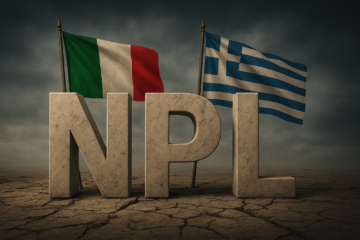Petroleo Brasileiro Petrobras SA, Market Cap (as of 15/11/13): US$112.19bn
PetroChina Co Ltd, Market Cap (as of 15/11/13): US$226.3bn
Brazil’s state-run oil company Petrobras announced on Wednesday 13th November that it was selling its Peruvian oil and gas assets to PetroChina for US$2.6 billion. The ownership structure underlying the deal is quite complex. Indeed, two subsidiaries of CNPC E&D, CNPC Holdings and CNODC International, have entered into the agreement as the buyers. In turn, CNPC E&D is a subsidiary of PetroChina and of a joint venture company 50% held by PetroChina itself and the other 50% owned by China National Oil and Gas Exploration and Development Corporation, the latter being a wholly owned subsidiary of China National Petroleum Corporation (the controlling shareholder of PetroChina).
The target company, Petrobras Energia Peru S.A., has three oil and gas fields in Peru. Thus, the agreement involves Lot X, a mature field that produced 16,000 barrels of oil last year, Lot 58 (recently discovered) and a 46.16% stake in Lot 57 (not yet operating). The total estimated production of the fields is around 800,000 metric tons oil a year. According to the 2012 audited financial statements, the target company had Total Assets of US$1.42bn (net assets approximately equal to US$0.66bn). Moreover, core businesses’ revenues amounted to US$0.6bn, with US$102mln of net profit.
The sale of Peruvian assets is part of Petrobras 5-year investment plan, announced in March: the divestiture of $9.9 billion of assets is necessary in order to collect money for investments in Brazil and especially to divert funds toward the exploration of the pre-salt oil reserves discovered off Brazil’s Atlantic coast. Overall, the company intends to invest US$237bn from 2013 to 2017 as it aims at more than doubling its petroleum production to 4.2mln barrels a day by 2020.
Moreover, Petrobras’ ability to raise money from the capital market is limited. Indeed, with a Debt to Equity ratio of nearly 0.35, it is the most indebted publicly traded oil company and rating agencies might downgrade the company. Indeed, at the beginning of October, Moody’s cut Petrobras’s foreign and local currency debt rating from A3 to Baa1, reflecting the increasing leverage of the Brazilian company that could grow until 2015 due to huge investment commitments. Even if it remains investment grade, the rating of the company is not stable. Moody’s said the outlook for the company is negative as many pension funds and major shareholders may sell Petrobras’ debt at this level of rating. Moreover, company’s cash flows have been strongly hurt by the government’s imposition of subsidizing gas and diesel domestically, selling them at below global market prices.
For the buyers, the deal drives the development of PetroChina’s overseas business, bringing its spending on foreign purchases this year to US$11.8bn (doubling last year figures), and increases the state-owned Chinese oil companies’ presence in Latin America. As a matter of fact, last month the China National Petroleum Company (CNPC) and the China National Offshore Oil Corporation (CNOOC), each got a 10% stake in Brazil’s largest offshore oilfield, Libra, by paying $700 million upfront (each of the two companies) and contributing 10% of the development costs for the field, which is estimated at $200-$300 billion over the next 35 years.
PetroChina shares fell 2.4% to HK$8.50 at the close in Hong Kong on announcement day and rose 3.9% to HK$8.83 in the following two days. Petrobras shares, on the contrary, rose more than 7% since the announcement (from US$16.04 to US$17.2), as investors appreciate the importance of such a divestiture for the company’ business plan.
The transaction is subject to certain customary closing conditions, including approval by Chinese and Peruvian governments.



0 Comments